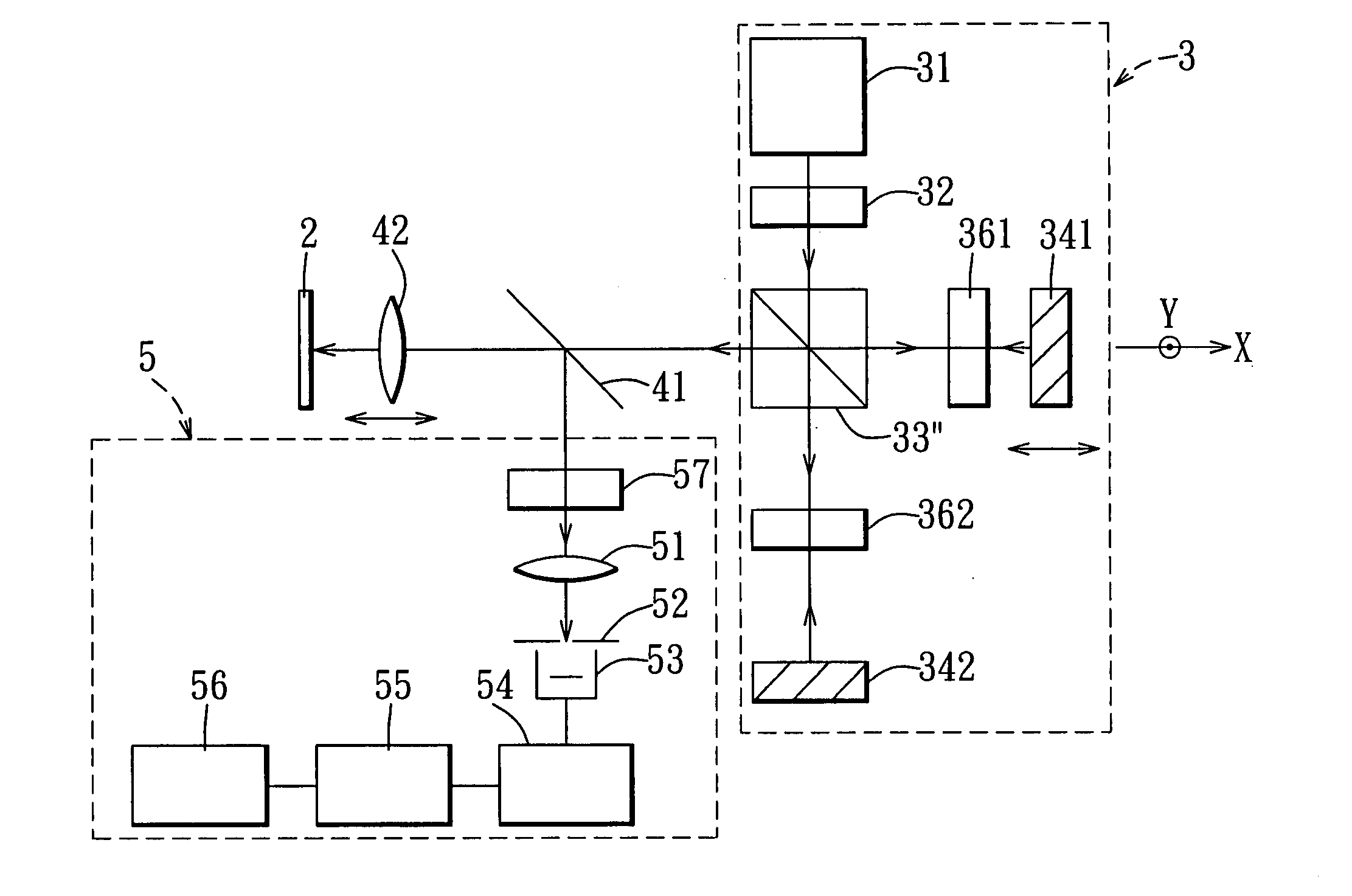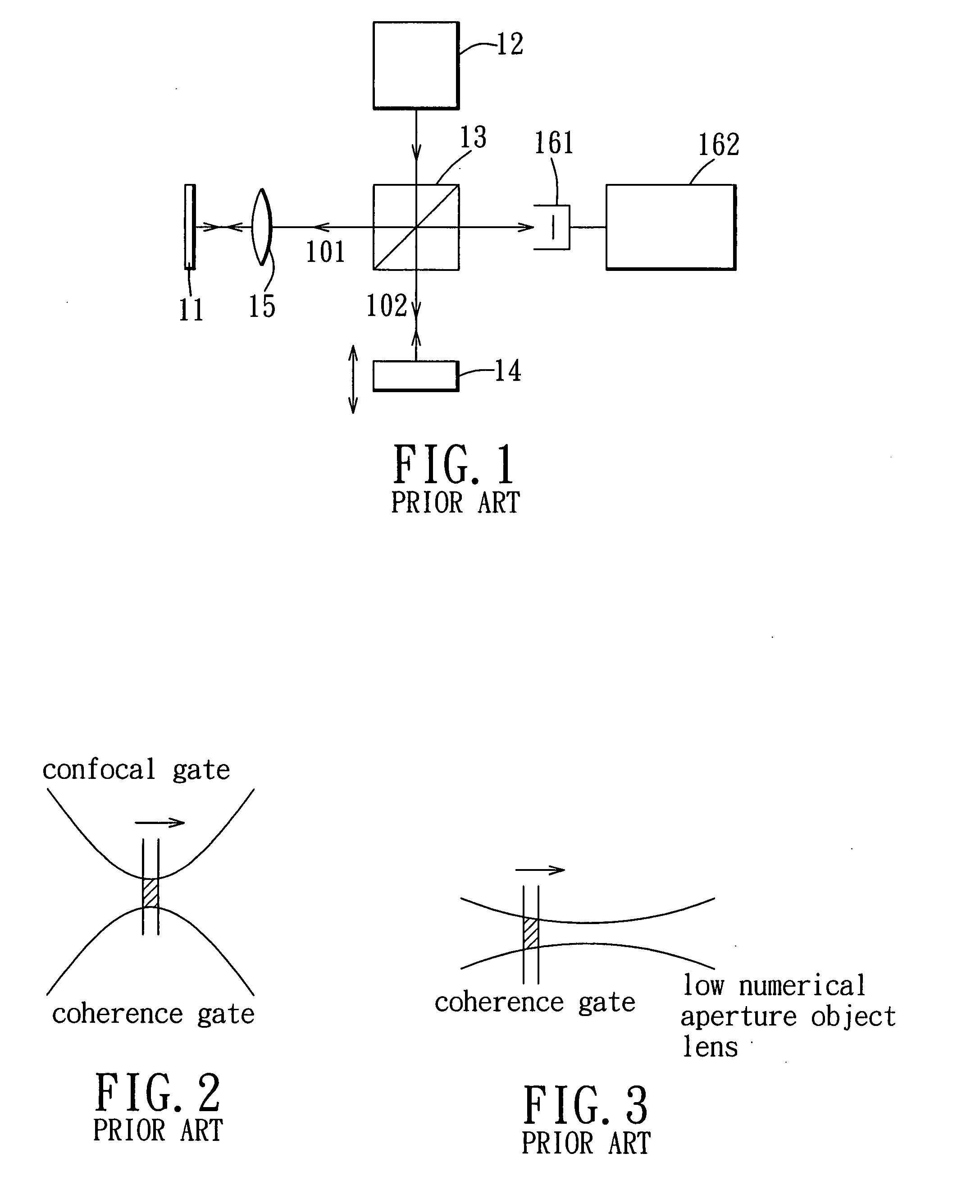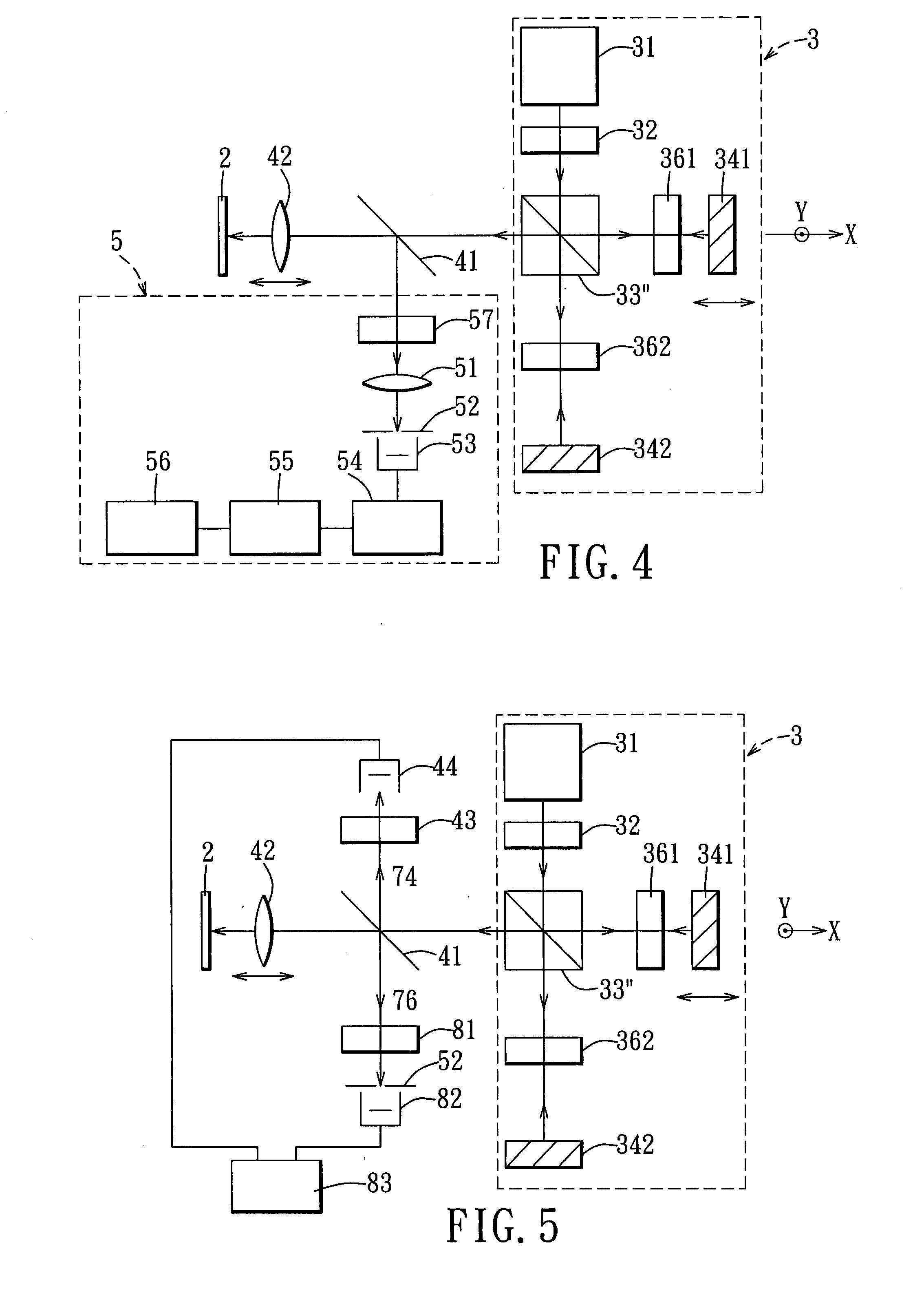Optical tomography method & device
a tomography and optical technology, applied in the field of tomography methods and devices, can solve the problems of reducing the difficulty of system installation, and reducing the scattering effect,
- Summary
- Abstract
- Description
- Claims
- Application Information
AI Technical Summary
Benefits of technology
Problems solved by technology
Method used
Image
Examples
Embodiment Construction
[0044]Before the present invention is described in greater detail, it should be noted that like elements are denoted by the same reference numerals throughout the disclosure.
[0045]Referring to FIG. 4, the first preferred embodiment of an optical tomography device for implementing the method of the present invention is shown to include a two-frequency beam generating unit 3, a relay beam splitter 41, a focusing lens 42, and a signal processing unit 5.
[0046]The two-frequency beam generating unit 3 includes a low-coherence light source 31, such as a super luminescent diode (SLD), and a polarizer 32 capable of adjusting polarization angles for generating a 45° linear polarized beam. The linear polarized beam is split by a polarizing beam splitter (PBS) 33″ into a p-polarization beam and an s-polarization beam, which are hereinafter referred to as a P wave and an S wave, respectively. The S wave is passed through a quarter wave plate (QWP) 361 having an azimuth angle of 45° to become a c...
PUM
 Login to View More
Login to View More Abstract
Description
Claims
Application Information
 Login to View More
Login to View More - R&D
- Intellectual Property
- Life Sciences
- Materials
- Tech Scout
- Unparalleled Data Quality
- Higher Quality Content
- 60% Fewer Hallucinations
Browse by: Latest US Patents, China's latest patents, Technical Efficacy Thesaurus, Application Domain, Technology Topic, Popular Technical Reports.
© 2025 PatSnap. All rights reserved.Legal|Privacy policy|Modern Slavery Act Transparency Statement|Sitemap|About US| Contact US: help@patsnap.com



